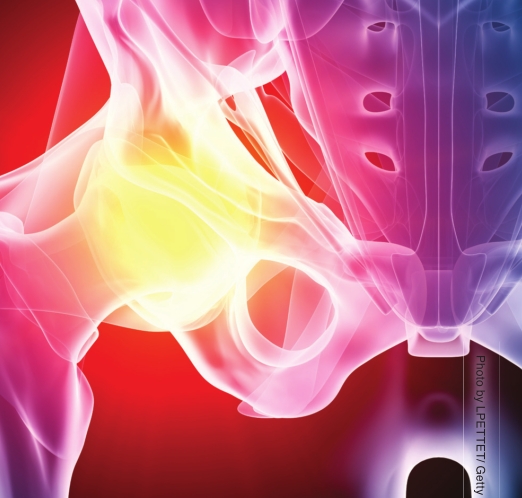
Procedure has become less invasive
The goals of hip replacement surgery include improved mobility, the relieving of pain, better function of the hip joint and, ultimately, a better quality to life. Dr. Timothy Talbert, an orthopaedic surgeon with the Highland Clinic in Shreveport, explained that after a patient has fully recovered from a hip replacement, expectations can be a vastly improved range of motion compared to preoperative motion, and that the key is to have good recovery of muscle function and control of the hip.
The reason for all hip replacements is pain, according to Talbert.
“The causes of pain are degenerative changes, osteoarthritis, avascular necrosis and trauma,” he said. “The most common diagnosis is degenerative joint changes, most commonly osteoarthritis. Other causes are inflammatory arthritis such as rheumatoid arthritis.”
Talbert described avascular necrosis as a condition where the blood supply to the head of the femur is lost and the femoral head dies, resulting in cartilage death and eventual fracture and collapse of the femoral head. This condition can also become a complication from certain traumatic injuries as well.
“Trauma to the hip does not always require hip replacement surgery,” Talbert continued. “Often, traumatic hip injuries can be treated surgically without hip replacement, but all prior hip traumas have a chance of deteriorating and requiring hip replacement. Fractures of the femoral neck, the area immediately below the femoral head, usually require immediate partial or total hip replacement because of the high likelihood the fracture will develop avascular necrosis.”
The surgery involves replacing portions of the hip joint, specifically the femoral and pelvic portions. Talbert explained how an implantation works to assist in this replacement.
“Most commonly, a metal cup is fit into the cup of the pelvis, and the femoral head is replaced with a metal ball,” he said. “The head is anchored in the femur by a five- to sixinch stem, placed in the hollow portion of the upper end of the femur. Between these two components, placed in the pelvis and femur, commonly
is placed a plastic liner – polyethylene. With improvements in the
materials, the survivorship of the implant is expected to be 30 years or
more.”
While
medical advances continue to be made, Talbert stated that the procedure
itself has become less invasive over the years. Additionally, depending
on the speed of the surgeon, the specifics of the case and patient, the
surgery from start to finish can range anywhere from 60 to 90 minutes.
Most importantly, however, is not the speed but the appropriate
placement of the implantations and the tissue being damaged as little as
possible.
“The
key to a good outcome still remains accurate positioning of the hip
implants and careful handling of the tissues,” said Talbert. “Techniques
have evolved in efforts to spare damage to tissue. … I want to
emphasize that the approach is not as important as preventing damage to
the surrounding tissues and the appropriate positioning of the total hip
implants. I would always advise the patient select a surgeon they trust
and rely upon, whichever technique [they] feel most comfortable with
performing in giving the best outcome.”
Because
of innovations and improved techniques with hip replacements, recovery
time has also certainly evolved. Talbert stated that the majority of
patients may be discharged the first day, and others ranging anywhere
from one to two days.
“Due
in large part to the less-invasive surgeries, patients may resume
activities much more quickly than in the not too distant past,” he said.
“If the patient is healthy enough, a total hip patient can go home the same day
as surgery. My partner and I have performed outpatient total hip and
knee replacements for over a year with excellent results. Patients may
shower as soon as the dressings are removed – two days after surgery,
usually.”
Not only have recovery times improved, but post-operative expectations have as well.
“The
goal is for all patients to walk the same day as surgery, and nearly
all do. Pain control techniques have greatly improved, allowing patients
to remain alert and requiring fewer pain meds. This, in turn, results
in patients less sedated and not nauseated. As the patients feel better,
they are able to rehab more quickly. Most of my patients are walking
with a cane and able to drive by their first follow-up visit, two weeks
after surgery. By six weeks, most are walking unassisted and able to
perform most activities. Restrictions are few, and most are not
permanent, but timed.”
Talbert
continued by explaining if a patient has wishes to engage in aggressive
physical activities such as extensive hiking or horseback riding, he
asks them to wait six months from the time of surgery. Additionally, if
the patient wants to jog or ski aggressively, he requires them to wait
one year, with cross-training up to the time of their first run.
“Increased activity is the norm,” he said.
“Most
patients can improve activities, and limitations are usually not
imposed except in the most extreme activities as those listed above.
These limitations need to be discussed with your operative surgeon.”
–Katie Ho